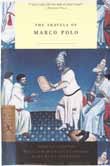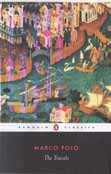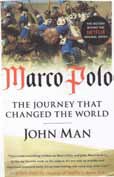
| What is Flavor and Fortune? |
| How do I subscribe? |
| How do I get past issues? |
| How do I advertise? |
| How do I contact the editor? |
Read 13092176 times
Connect me to:
| Home |
| Articles |
| Book reviews |
| Letters to the Editor |
| Newmans News and Notes |
| Recipes |
| Restaurant reviews |
| Article Index (all years, slow) |
| List of Article Years |
| Article Index (2025) |
| Article Index (last 2 years) |
| Things others say |
| Related Links |
| Log In... |
| Authors |
| Categories & Topics |
TOPICS INCLUDE: Spice Rub, Recipe Records, Supreme God, Yin/Yang Methods, Gingko, Chinatown, Sailing Ships, Marco Polo, Solstice, Duck Tongue, Soup Dumplings, Minorities
| by Jacqueline M. Newman |
Letters to the Editor
Winter Volume: 2018 Issue: 25(4) pages: 5 to 8
Editor:
I live in a small town; no store carries a Chinese spice
rub. Do you have a recipe for one?
Mary Anne: The one that follows is one I make. There
are many others, and you can find some on the many web
sites with Chinese recipes. They go by different names
including Five-spice Rub. We recommend you keep it on
your spice shelf, in a small glass jar. We even carry it
to the dining room of the life-care community where we
now live to increase the flavor of the many bland foods
served for healthy seniors like us.
| Chinese Spice Rub |
|---|
1 star anise, broken in pieces
1. Put all ingredients into a dry clean spice grinder. Turn
it on an off until no large pieces are visible, but do not
grind it too finely.
|
Newman:
Are we correct that the last issue did include more
recipes than any other?
An Wen: Yes, Volume 25(3), the Summer 2018 issue
did have the most recipes to date, more than fifty
of them. We did test most ourselves as several good
friends who did help in the past moved. Therefore, I
could not taste their efforts before publishing them.
They were too far away to do so. I do miss their help
and friendship. Years ago, several readers did complain
about the recipes, but only about their font size. We did
increase that which meant reducing their number in any
one issue. Often did wonder If anyone noticed as not a
single comment about recipes came our way until yours.
Was it noticed and no one used a stamp or their e-mail
to so advise?
Editor:
Does China have a ‘Supreme God’; and does that
omnipotent preach about food?
Leon in Colorado: The Chinese do have
one and he is named Shangdi. From at least the Shang
Dynasty pre-dating Confucianism, Daoism, Buddhism,
and Christianity, he teaches universal love, and is not
monotheistic. His rituals include slaughtering and
sacrificing a bull, but we found nothing relating to a
specific food.
Sisi in Malaysia:
Wonder if there are any yin/yang cooking methods?
Sisi: Among those known as yin, the Chinese include
boiling, braising, simmering, stewing, steaming, and
putting food in hot liquids; called ‘plunging.’ Yang ones
include baking, deep-frying, grilling, roasting, sauteing,
and stir-frying. The Chinese believe five characteristics
are needed at every meal including aroma, taste, color,
shape, and mouth-feel; they say they impact one another.
We are no expert on how, but do suggest you check with a
TCM practitioner or some web sites for more information
on this topic.

From Jan in Boston:
Having trouble with your web site and can not find
‘ginko.’ Do recall your telling us about that animal.
Jan: Years back, we made the same spelling error.
The Gingko plant is from the ‘maidenhair’ tree and
called Gingko biloba. Most are not aware, as we
once were not, that it is a more than one hundred
million year old and the only surviving member in its
botanical family. Furthermore, it is widely prescribed
in China and popular there and throughout Europe,
the US, and elsewhere. TCM practitioners tell us they
recommend it for early Alzheimer patients, hearing
problems, brain dysfunctions, macular degeneration,
diabetic neuropathy, and more, and that the outer layer
of its seed is a skin irritant. Many handle it with rubber
gloves. The Chinese have been using it for thousands of
years. Before you do, we suggest you consult a medical
professional for answers to any specific questions. We
are not medical doctors and do not know your specific
needs and considerations.
Cristen in NY asks:
Is the Chinatown where I live the world’s oldest?
Cristen:> No. The one in Manhattan did not
begin until the mid-1800s. The world’s oldest is
in Manila in the Philippines and was established
in 1594. The one in Jakarta in Indonesia began
in 1740, the one in Bangkok in Thailand began
in 1782. In the UK, the one in Liverpool began
in the 1830’s; the one in San Francisco began
in the 1850s; and those in the states of Oregon,
Washington, Idaho, Utah, Colorado, and Arizona
began in the mid to late 1800s, their exact dates
are not known. In New York City, Manhattan’s
Chinatown has the largest concentration of
Chinese in the Western Hemisphere; but the
one in San Francisco is physically larger with
a smaller Chinese population. There are
large Chinatowns in Boston, Philadelphia,
Providence, and Baltimore, but when each one
began we know not.
Editor JMN:
I really think F&F gets better with every
issue, and I thank you for that.
Ms. Yang: Appreciate your comment,
your renewal, as well. Both keep us moving
forward at this, our 25th publication year. We
appreciate all who renew each and every year.
Debby Asks:
Did ships sail from China and Macao with
Chinese aboard in the late 1700s?
Debby: We think they did because Xie
Qinggao was rescued from one of them after
his was wrecked by a European vessel. He
worked on it for fourteen years before that
accident, used his English as an interpreter
in Macao before that, and when the ship wintered there;
it was known as the Felice, flew the Portuguese flag,
and had forty-nine Chinese sailors helping it to sail and
capture sea otters. Read more about it and him at http://
pages.quiicksilver.net.nz/jar/-vfur’l,html or in the book:
Meares Voyages.



Sava and Saba Leong ask:
Can you tell us when and where Marco Polo was
jailed after returning from China?
Sava and Saba: We read that Marco, his father
Nicolo, and his uncle Maffeo did return to Italy via
Java and Sumatra, then on to Egypt, and
from there to Genoa by ship in the year
1292 (another source says 1296). Marco
was seventeen when they left in 1271. After
his return, he was put in prison in Genoa
after battles between Genoa and Venice.
His cell mate, Rustichello, from Pisa, was
a writer of romance novels. He did record
much of what Marco tells him while there.
Later, he publishes a book, The Travels of
Marco Polo translated into German (1477),
Portuguese (1502), and Spanish (1503). Our
shelves have three copies, all with different
authors and text. We read there are more
than a hundred different ones, not all telling
the same stories. The one similar thing in
each of them is that ‘Marco Polo’ is in their
title. Many who read them are skeptical
about what his cell mate writes that Marco
says he saw in China. We also read that, the
Culinary Historians did report that he saw
and maybe ate (their Volume 7, Ann Arbor
MI). It includes twelve poultry items, fifteen
meats, ten fruits, seven grains, four milks,
three nuts, six fish, eleven spices, three
vegetables, seven alcoholic beverages, and
eight as miscellaneous; including two spices
and one melon.
Harry Asks:
A few questions, please, can you share
anything about the Dongzhi holiday,
who was the first Chinese man on earth,
and which Chinese cuisine has the most
chicken dishes?
Harry: That is a lot to ask. Your first
query, is of the Winter Solstice Festival. In 2017, it was
on December 22nd. It is always the shortest day and
longest night of every year. To your second, we have no
idea. As the third one, we never counted any dishes in
any cuisine and know of no one who has. We do know
that Guangdong cuisine has hundreds, many related
to Hakka cuisine. A lady once did tell us Dongjiang
Chicken is on menus in many including in Guangdong,
Guangzhou, Hong Kong, and Macao.
Yuan in Idaho asks:
Can you tell us when and where Marco Polo was
jailed after returning from China, and about goose
and duck tongues?
Yuan: See page 6. We know about cooking duck
tongues. At our recent 65th anniversary dinner, the cold
plate had five items, a lucky number, wishing us luck for
more years, and five sets of items. Does a reader have a
recipe for goose tongues, we do not. Enjoy the two Duck
Tongue recipes that follow.
| Duck Tongues with Sesame Paste |
|---|
½ pound of duck tongues
1. Mix the duck tongues with salt and set aside for five
minutes, then rinse and simmer them for five minutes,
and then drain them. Next, break each one between
bone and cartilage, and discard both.
|
| Duck Tongues with Fermented Rice |
|---|
3 cloves fresh garlic, peeled and minced
1. Boil duck tongues for five minutes in two cups water,
then remove and discard their bones and cartilage.
|
Editor:
Soup dumplings are becoming popular; were they
always thus, and do you have a recipe?
To all who asked: To the many who asked,
there are many ways to enjoy these delights; and we
often do. The recipe below is thanks to a local chef we
know.
| Xiao Long Bao |
|---|
2 cups bread or high gluten flour
1. Mix flour, salt, and the gelled stock, then knead this
until elastic, and let it rest for ten minutes.
|
Dr. Newman:
Thanks for the information about ancient books; do
any minorities have any?
Howie: Read about thousands of Mongolian Books
in their language; the Yin have that many, too. Tibetans
have many in wood blocks, and I am sure there are many
others in their own languages. How many I do not know
or where they may be. There are some in Tujue, Huihu,
and in Dongba which is the language of the Naxi people,
and the best resource might be at the History Institute of
the Chinese Academy of Social Sciences. Emperor Qian
Long in the Qing Dynasty did issue an edict to collect
all classical, historical, and philosophical books, and
copy them. More than three hundred scholars worked
on that task for ten years, their efforts including almost
seven thousand volumes. They are in the Complete
Library of the Four Treasures. Some passages were not
copied as they were not complimentary to Qing rulers;
some burned for similar reasons. We do not know if
any had recipes, do you?
JMN:
Just got the Fall issue; It is a doozey chockablock with
good stuff.
HS: You and many others did appreciate it. Thanks to
all who wrote about it.
From Min Lu:
Minority info on the web is in short supply;
particularly for those in the Yunnan Province.
Sir: The last date we saw said about one third there
are minorities. The Yi are the largest, followed by the
Bai, Hani, and Dai; each with more than one million..
Between half and one million each are Lisu, Va, and
Jingpo, and the Jinu include eighteen thousand people.
The Va are one of China’s oldest minorities, their young
girls comb the hair of boys they fancy singing when
doing so. He can spend a night at her home but sex is a
no-no and forbidden before marriage.

Copyright © 1994-2025 by ISACC, all rights reserved
Address
3 Jefferson Ferry Drive
S. Setauket NY 11720